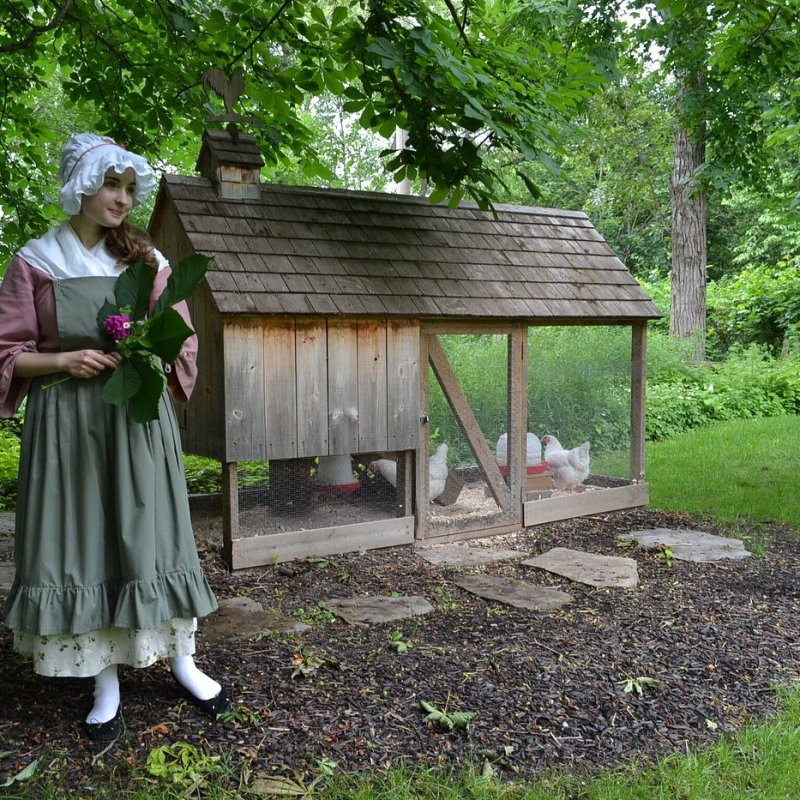
What do you know about the history of Montreal, one of Canada’s most charming (and modern) cities?
Videos by TravelAwaits
As the capital of Quebec, Canada’s hub of Francophone culture, most travelers can name a few things about the city.
You might know that most locals speak French, that there’s plenty of architecture reminiscent of Europe, and that locals love to gather for cultural and social festivities.
But lying beneath the surface, there’s a lot going on in this city, especially in the way of history.
Off the top of my head, I can name one really wild factoid: Montreal got along really well with the Confederates during the Civil War. Many of the top generals and leaders in the Confederate Army chose to move to Montreal after the war rather than remain in the South.
It’s kind of a crazy story—one that I’ll leave for someone else.
Here’s my point: Montreal’s history has a few twists and turns, and some of its oldest historic sites are still standing today.
And given that Montreal was first founded by a French settler named Jacques Cartier back in 1535, there’s plenty to sink your teeth into on your next visit. While you don’t need to frame your visit around history, you might want to tack on a little visit to one of the sites below.
(Want a short-and-sweet take on local history? Head to the Point-a-Calliere Archaeology & History Museum. And don’t miss the Memory Collector exhibit downstairs.)
(What about a place to stay in Montreal? The city is home to many charming Airbnbs.)
Historic sites in Old Montreal that you could miss
- Hochelaga (1300s)
- Maison Saint-Gabriel (1668)
- LeBer-LeMoyne House (1671)
- Sulpician Towers (1694)
- Chateau Ramezay (1705)
- Notre-Dame Basilica (1829)
- Sir George-Etienne Cartier (1838)
- Bonsecours Market (1847)
- Saint Joseph’s Oratory (Mount Royal) (1904)
- Cormier House (1931)
Don’t miss these historic sites in Old Montreal
Hochelaga (1300s)
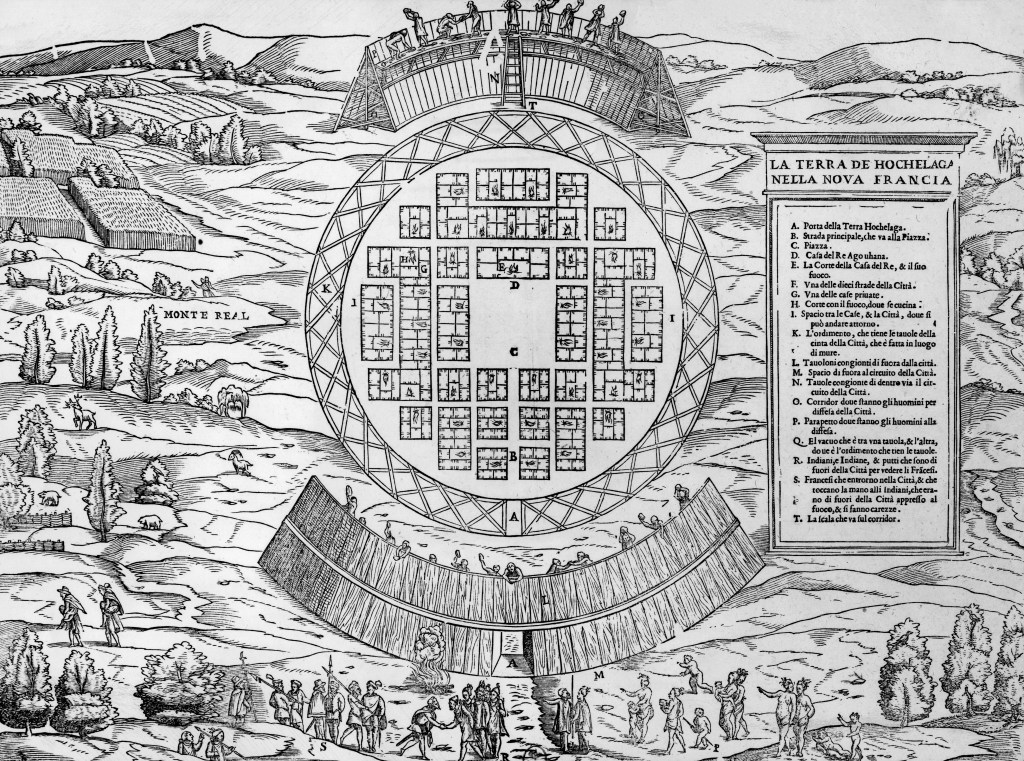
As mentioned above, a French explorer named Jacques Cartier first landed in the area of modern-day Montreal. He visited an Iroquois village called Hochelaga, which was located near current-day Mount Royal. The village had likely existed since the 14th century as a major hub and residential area.
You can visit the spot where Hochelaga is thought to have existed, though no archaeological evidence has definitively proven where the village was located.
Today, you can visit the historic marker plaque on Sherbrooke Street at the entrance of McGill University. To be fair, it’s just a plaque—there’s no larger exhibit or museum for you to learn more.
Still, it’s a callback to Montreal’s pre-history that not many people know about—and a name that you’ll see around town. Hochelaga-Maisonneuve is a neighborhood in Montreal that’s quickly becoming trendy. Think of it like knowing the origin of the name Manhattan in New York City.
Maison Saint-Gabriel (1668)

Take a look at how rural French settlers lived in the mid-17th century. Inside, you’ll find an accurate replica of earlier décor and household items. Plus, you can take a tour with guides in period costumes—and they’re passionate about what they do, which bodes well for travelers. From the medicinal gardens to the fire-burning oven, you’re in for plenty of historic (and delightfully educational) fun.
LeBer-LeMoyne House & Musee de Lachine (1671)

LeBer-LeMoyne House is the oldest still-standing homes on the island of Montreal. At the Lachine Museum (Musee de Lachine), you’ll get to take a look inside a fur trader’s humble home. This building was constructed by two trappers and traders, which today houses an archaeological collection of items from the time period.
Unfortunately, this site is currently undergoing renovations—but they should conclude in 2025.
Sulpician Towers/Fort de la Montagne (1694)
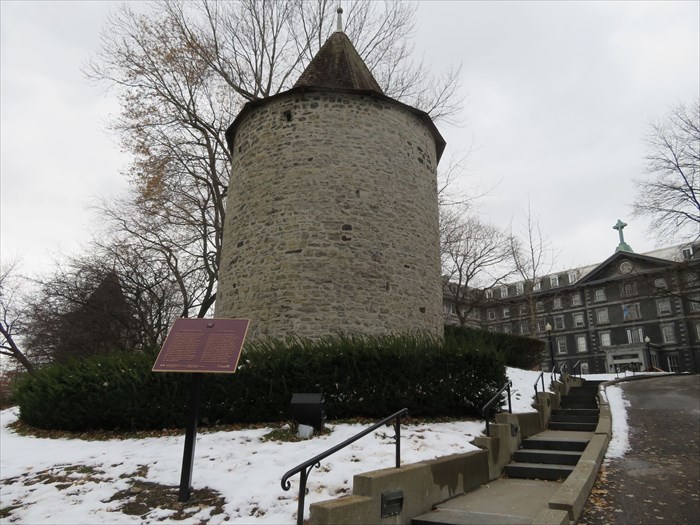
When you traverse downtown Montreal, you might see two large stone towers on Sherbrooke Street, which date back to the late 1600s. They were part of the Fort de la Montagne, which was constructed by a Catholic Sulpician Order to Christianize indigenous groups and protect the area.
Over time, the fort was used for different purposes before, in 1854, the entire fort was destroyed, aside from the towers.
Chateau Ramezay (1705)
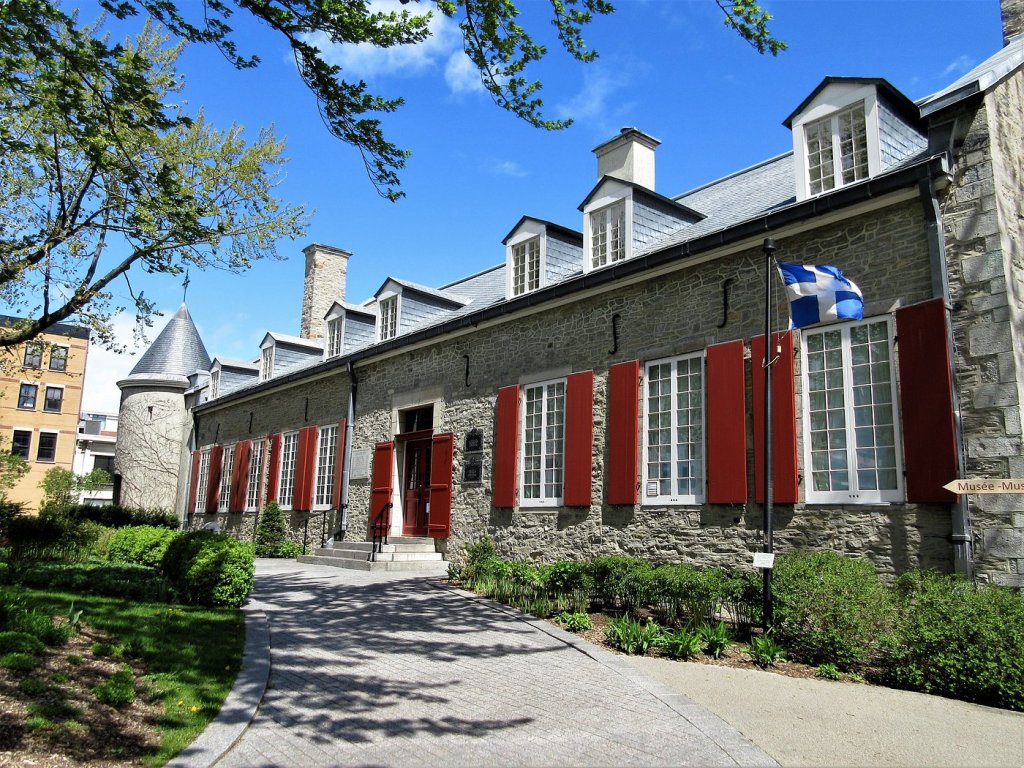
Similar to Maison Saint-Gabriel, this historic home lets you take a glimpse into the past. Once again, you can expect a faithful representation of what life would have looked like for the area’s earliest European settlers and the local indigenous groups.
This time, through the lens of a slightly larger chateau. Plus, there are bonuses like high-tech exhibits, costumed guides, and a lovely Governor’s Garden tour.
Notre-Dame Basilica (1672-1830)
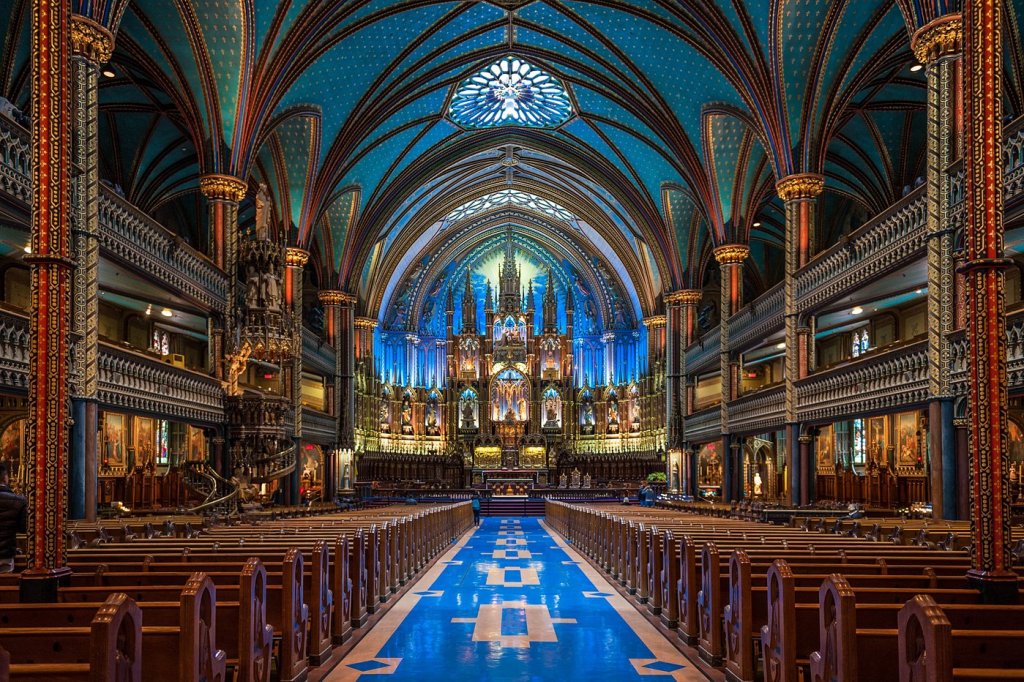
You probably already have Montreal’s Notre-Dame on your bucket list—but you should know that the modern church that people visit today wasn’t constructed until the 19th century.
The original parish church, dating back to the 17th Century, was replaced by a new construction that was erected in 1830 and later finished in 1865 when the façade was completed. (That’s not counting the interior, however, which wasn’t fully finished until the organ was installed in 1891.)
Sir George-Etienne Cartier Historic Mansion (1838)

Forget the early settlers of Montreal—let’s move into flashier territory. If you want to see how the upper middle class lived in the mid-19th century, head to this gorgeous, massive mansion.
It belonged to George-Etienne Cartier, an important political figure who supported Quebec’s union with Canada. During the tour, you’ll get a look at the home’s gorgeous interior, along with a few exhibits on the political history of Montreal and Canada.
Bonsecours Market (1847)
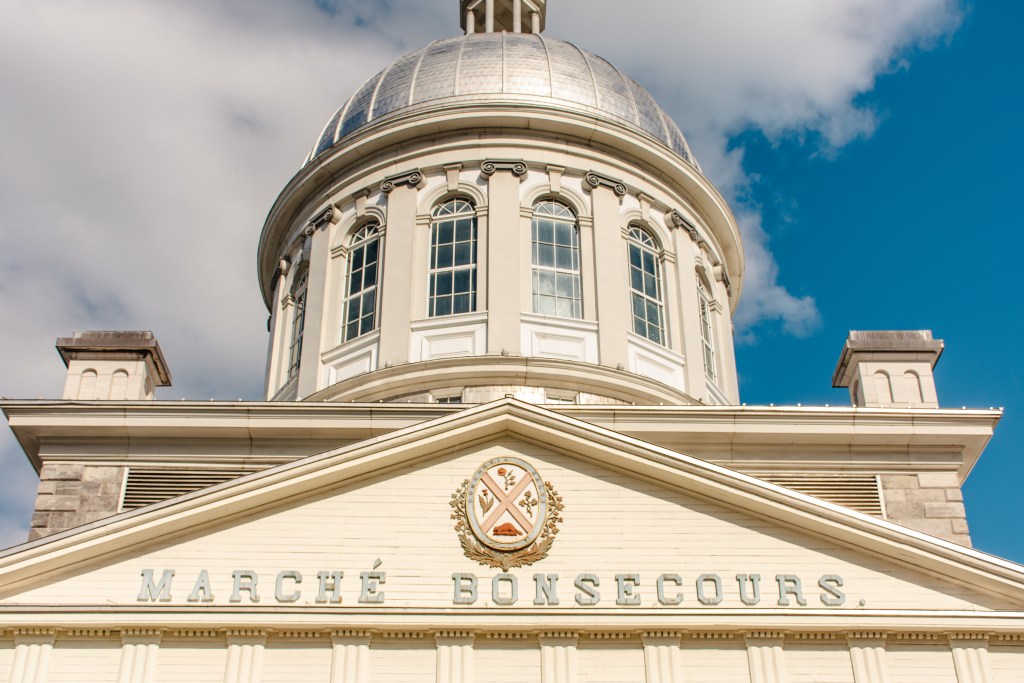
If you go on a walking tour around Old Montreal near the Saint Lawrence River, you’re bound to hear someone mention Bonsecours Market. Up until the 1960s, it was a massive fresh food market for locals.
Since then, it’s been converted into government offices, then revamped with some shopping. Apparently, the shopping is a little soulless and basic—but the architecture might still draw you inside.
Saint Joseph’s Oratory (Mount Royal) (1904)
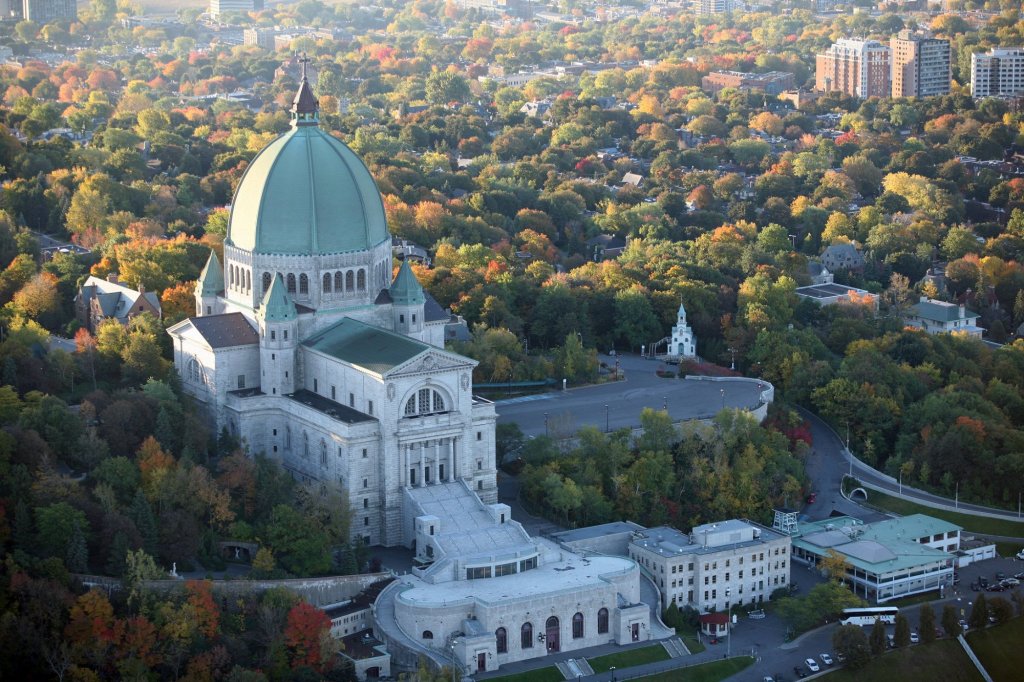
As with Notre-Dame, you likely already have Saint Joseph’s Oratory on your radar. It’s a little bit off the beaten path on Mont Royal, but you’re bound to spot this grand, stunning structure from the city.
It’s a Catholic shrine to Saint Joseph (patron saint of the New World) that welcome two million visitors each year. Whether or not you’re into saints, it’s got a great view and is the largest domed Basilica in North America—one that usually has close to 10,000 votive candles lit inside.
Cormier House (1931)
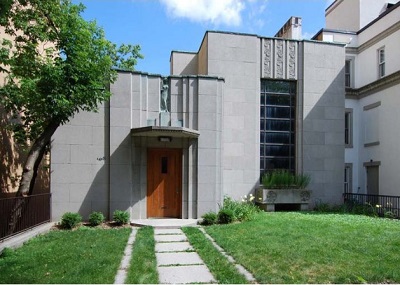
My last suggestion for semi-hidden Montreal historic sites is the Cormier House, a stylish Art Deco mansion completed around one century ago. It’s funky, somehow still modern-feeling, and will make you obsessed with Art Deco.
Unfortunately, it’s not currently open to the public (former PM Justin Trudeau’s younger brother lives in it, for now), but you might spot it if you enter Mount Royal Park from Park Percy-Walters. I’m also hopeful that one day it will fall into the public domain and tours will be offered. (Who doesn’t love masterful Art Deco?)
